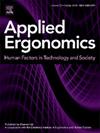有条件自动驾驶是个坏主意吗?对具有多级驾驶自动化的自动驾驶车辆进行的道路研究观察结果
IF 3.4
2区 工程技术
Q2 ENGINEERING, INDUSTRIAL
引用次数: 0
摘要
随着自动驾驶技术的日益普及,配备SAE 3级自动驾驶技术的车辆开始在市场上出现。本研究探讨了驾驶员在道路上驾驶条件自动驾驶车辆时的行为,提供了多层次的驾驶自动化。16名参与者在公共高速公路上驾驶一辆Wizard-of-Oz汽车,该汽车提供多种自动化级别(手动、SAE 2级和3级)。数据是在驾驶期间(观察和大声思考)和驾驶后(深度访谈)收集的。结果表明,驱动程序在模式转换和模式感知方面存在错误。这些错误包括意外停用2级自动驾驶、断开3级自动驾驶后对驾驶模式的混淆,以及对当前驾驶模式的混淆。这些发现突出了自动化系统设计的一个基本限制,当人类需要在一个系统中操作多种模式时,很难清楚地区分它们。这种模糊性和缺乏理解影响了驾驶员如何与自动驾驶汽车互动、解释和响应。该研究为设计具有多级驾驶自动化的自动驾驶车辆提供了见解,旨在提高模式意识和整体安全性。本文章由计算机程序翻译,如有差异,请以英文原文为准。
Is conditionally automated driving a bad idea? Observations from an on-road study in automated vehicles with multiple levels of driving automation
With the increasing adoption of driving automation technologies, vehicles equipped with SAE Level 3 driving automation are becoming available on the market. This study explores drivers’ behaviour when driving conditionally automated vehicles on-road, providing multiple levels of driving automation. Sixteen participants drove a Wizard-of-Oz vehicle offering several levels of automation (Manual, SAE Level 2 and Level 3) on a public highway. Data was collected during driving sessions (observations and think-aloud) and post-driving sessions (in-depth interviews). The results indicate that drivers show errors in mode transitions and mode awareness. These errors include unintended deactivation of Level 2 driving automation, confusion about driving modes after disengaging Level 3 driving automation, and confusion about the current driving mode. These findings highlight a fundamental limitation in the design of automation systems when humans are required to operate multiple modes within a single system, making it challenging to distinguish between them clearly. This ambiguity and lack of understanding affected how drivers interacted with, interpreted, and responded to the automated vehicle. The study provides insights for designing automated vehicles with multiple levels of driving automation, aiming to improve mode awareness and overall safety.
求助全文
通过发布文献求助,成功后即可免费获取论文全文。
去求助
来源期刊

Applied Ergonomics
工程技术-工程:工业
CiteScore
7.50
自引率
9.40%
发文量
248
审稿时长
53 days
期刊介绍:
Applied Ergonomics is aimed at ergonomists and all those interested in applying ergonomics/human factors in the design, planning and management of technical and social systems at work or leisure. Readership is truly international with subscribers in over 50 countries. Professionals for whom Applied Ergonomics is of interest include: ergonomists, designers, industrial engineers, health and safety specialists, systems engineers, design engineers, organizational psychologists, occupational health specialists and human-computer interaction specialists.
 求助内容:
求助内容: 应助结果提醒方式:
应助结果提醒方式:


